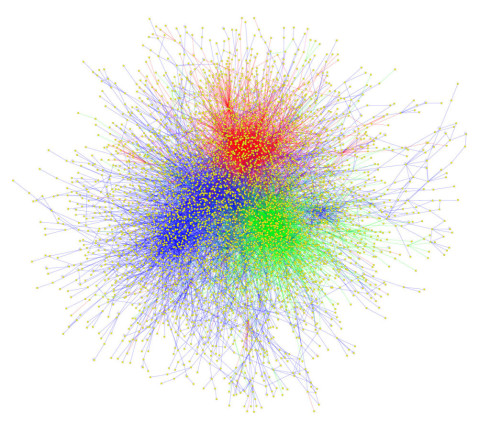The momentum of exposome research is building with each of the past few years offering advancements to the conversation, technologies, analytic methods, funding opportunities, etc. The past year was no exception.
Exposome Gaining Attention
January 2015 kicked off with an NIEHS (National Institute of Environmental Health Sciences) sponsored workshop on the exposome. Pre-meeting and at-meeting workgroups were formed to explore and better define specific components of exposome research along with broader recommendations. It is hard to know how many activities resulted from this workshop but for the clear few, they have been significant. A couple are highlighted below.
By the end of this year, five manuscripts resulting from the meeting were completed covering external exposure, environmental epidemiology, biomonitoring, biological response, and informatics and data analytics in the context of exposome research. The manuscripts are currently under review and will likely be released sometime this year, offering key recommendations directly resulting from the workshop.
At Society of Toxicology’s annual meeting in March, a special continuing education course was offered to provide researchers with an introduction to the exposome from Gary Miller (Emory University), John Wambaugh (US EPA), Martyn Smith (UC-Berkeley), and Chirag Patel (Harvard Medical School). Later in the year, EXPOsOMICS offered a short course on the exposome providing an introduction to statistical approaches needed to analyze high throughput data from the various well-established OMICs platforms.
The Science Philanthropy Alliance highlighted “Mapping the Human Exposome” as one of the eXtraordinary Opportunities (XO files) for private funding, requiring large scale, collaborative research across multiple institutions. The exposome sits alongside other high profile XO files such as “Resetting the Clock of Life”, “The Mystery of Dark Matter”, and “Re-inventing Gravity” which clearly propose what research questions need to be answered, how to approach them and what financial support would be required to complete the projects.
Funding for Exposome Research
Exposome research has previously received attention from funding agencies in Europe with the European Commission funding multiple exposome studies under the FP7 framework. Although the first exposome research center in the United States, HERCULES, was funded in 2012, there has been no additional direct funding of the exposome until this past year.
In February 2015, the CHEAR RFA was released from NIEHS. The CHEAR network will offer the first major investment into the early-life exposome research effort in the United States, providing access to laboratory and data analysis services for children’s health researchers wanting to expand their analysis to include environmental exposure measures.
Even outside of NIEHS, the exposome has earned consideration with inclusion of the influence of environmental factors on mental disorders in the updated strategic plan for the National Institute of Mental Health.
More funding that expands the window of the early-life exposome to include adolescents is now available through NIEHS with the Environmental Influences on Child Health Outcomes (ECHO) funding mechanism. As various exposome studies in Europe and Japan start to release results and additional studies are funded in the United States, significant advancements in exposome characterization will surely follow.
Expanding the Conversation: Methods for Exposome Research
If there is one thing agreed upon in exposome research, it is the immense challenge of capturing and understanding the complexity of the exposome. Each year advancements in methods and the conversation surrounding them offers a better window into these intricacies.
In May, the National Academies held a workshop on “Metabolomics as a Tool for Characterizing the Exposome” with five special sessions.
- Use of metabolomics to characterize human exposures to environmental stressors—a vision
- Collecting metabolomics data: technical challenges and opportunities
- Turning data into information
- Metabolomics case study
- Exposome, metabolome, and implications for decision making
Many papers contributed to the exposome conversation; a few of these are highlighted below.
Sequencing the exposome: A call to action
Dean Jones of Emory University reviews high-resolution metabolomics as an ideal tool for routinely and affordably analyzing samples for a wide range of environmental chemicals and biological responses.
Teeth were proposed as a promising new biomarker to capture the early-life exposome given their tree ring-like growth and disposition of organic chemicals along these defined rings (i.e., time points).
Comprehensive serological profiling of human populations using a synthetic human virome
Although considered a non-traditional exposure, viruses and bacteria are a component of the exposome. Published in Science, a new technology called VirScan allows screening of someone’s cumulative lifetime viral exposures with only one microliter of blood and a cost of $25 per analysis.
Go et al. demonstrated that high-resolution metabolomics can be used to reliably quantify exposures to thousands of chemicals.
Exposomics: mathematics meets biology
In November, Mutagenesis released a special exposomic series that offered a few examples of exposome research, including epigenome-wide methylation studies, a human nutrigenomics study assessing a complex exposure using transcriptomics, and epigenomics for evaluating in utero exposures and childhood cancer risk.
The Year to Come
Where exposome research will lead is largely unknown but needless to say, our understanding of complex exposures and their impact on health will grow significantly through our efforts. A few things we do know—CHEAR will measure its first samples, the first exposome short course will be held in the United States at Emory University this June, and multiple conferences will highlight advancements in exposome research including Central and Eastern European Conference on Health and the Environment, International Society for Exposure Science 2016, International Society for Environmental Epidemiology 2016, Society of Toxicology 2016 and American Society for Mass Spectrometry.

